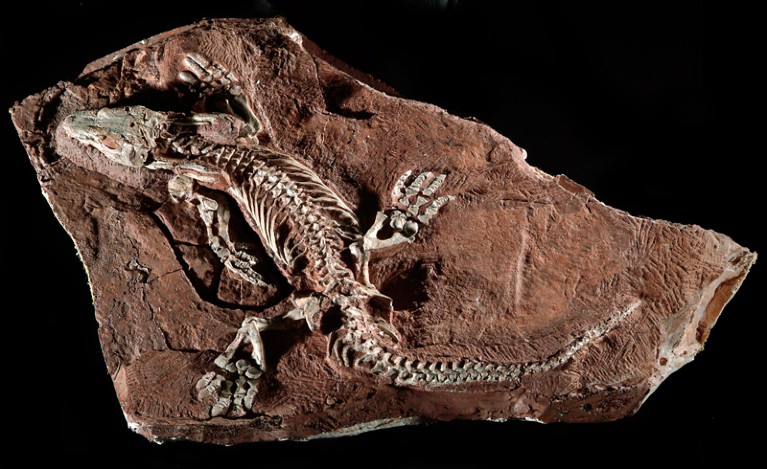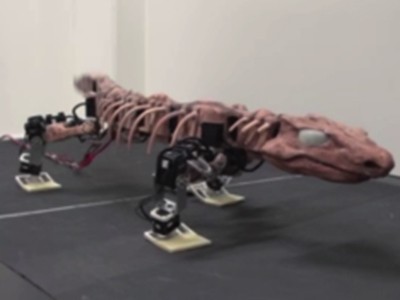
Cinematic techniques have recreated the movements on ancient amniote.Credit: Phil Degginger/Alamy
The trolls and orcs in The Lord of the Rings films aren’t real. The dragons and dire wolves on the hit television show Game of Thrones are simulated. The dinosaurs that rampaged through a string of Jurassic Park films don’t exist outside a computer. Or do they?
These days, it can be hard to tell from the screen, given that computer-generated characters in films and video games now seem so realistic down to every tooth and claw. The realism comes from the long and fruitful interaction between science and the cinema that can be traced back to the pioneering work more than a century ago of the photographer Eadweard Muybridge (the eccentric spelling of his first name was a deliberate homage to Anglo-Saxon style).
Read the paper: Reverse-engineering the locomotion of a stem amniote
The blending of cinematic and scientific techniques continues today. In a paper in this week’s Nature, researchers describe how they used animation techniques to reconstruct the motion of a long-extinct animal (J. A. Nyakatura et al. Nature 565, 351–355; 2019). The results will not be coming to cinemas near you any time soon. The study is an effort to answer a purely scientific conundrum.
The question is all about how early vertebrates moved on land. The earliest land vertebrates, or tetrapods, remained close to the ground. More-advanced tetrapods, the amniotes (which include today’s reptiles, birds and mammals), adopted a more efficient style of locomotion in which the body is held clear of the ground, a much more effective way of getting around on land than salamander-like slithering. When did amniotes first adopt this mode of locomotion?
A chance to examine this came with the discovery of a crocodile-like animal called Orobates pabsti, which lived approximately 280 million years ago in what is now Germany. Orobates is a ‘stem’ amniote. That is, it is an offshoot of the evolutionary line that led to amniotes, but is not a member of the amniotes proper. It is therefore a good test case for studying the life of an animal on its way to becoming an amniote. By happy chance, many excellent fossils of Orobates exist, along with trackways — such as footprints — that can be confidently assigned to the creature.
Trackways can be used to understand the possible motion of an animal, but the researchers — John Nyakatura of the Humboldt University of Berlin and his colleagues — went further. They built computer models of Orobates to understand the plausible range of motion of its spine and limbs. They then used these to create dynamic computer models, in which the data were combined with realistic simulations of how the animal might have physically interacted with its environment. In other words, they gave the animal force, mass and weight. They even built a robot of the simulated creature. And here’s where the movie magic comes in.
Ever since Walt Disney created Snow White and the Seven Dwarfs in 1937, film-makers have been familiar with a technique called rotoscoping: overlaying live-action footage with animation. In this study, the researchers used the same technique — in this case, high-resolution X-ray cinematography of modern animals including caimans, iguanas and salamanders — as a basis for overlaying images of skeletal elements in the digital domain, thereby constraining the movements of the digital models of Orobates to the realms of the possible. What’s more, the researchers invite us all to join in the fun, by tweaking the parameters of their Orobates models online (see go.nature.com/2vuhueo). That means that we can all help to breathe life into a long-extinct creature, an activity as valid for entertainment as it is for scientific research.

 Read the paper: Reverse-engineering the locomotion of a stem amniote
Read the paper: Reverse-engineering the locomotion of a stem amniote
 Put it on camera: How to get into scientific film- and video-making
Put it on camera: How to get into scientific film- and video-making




